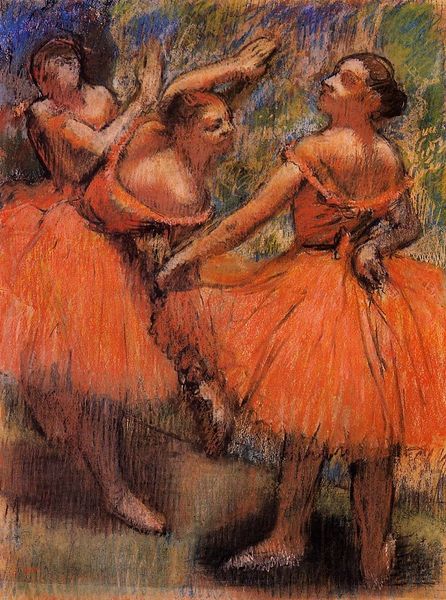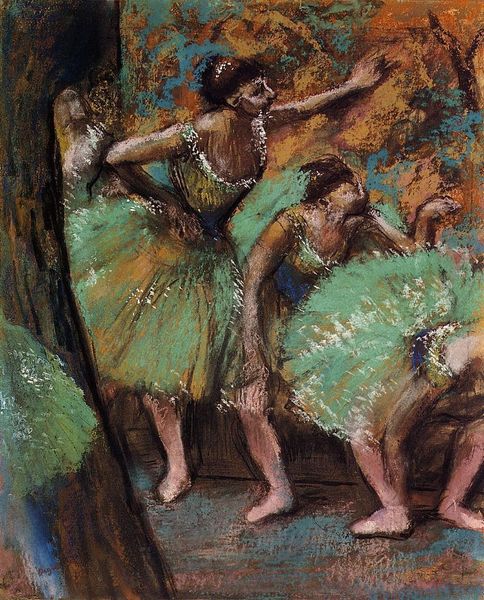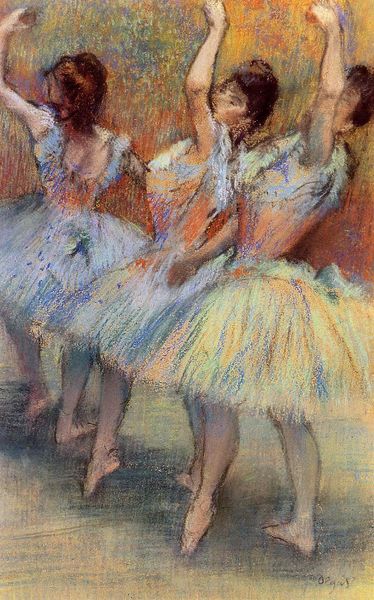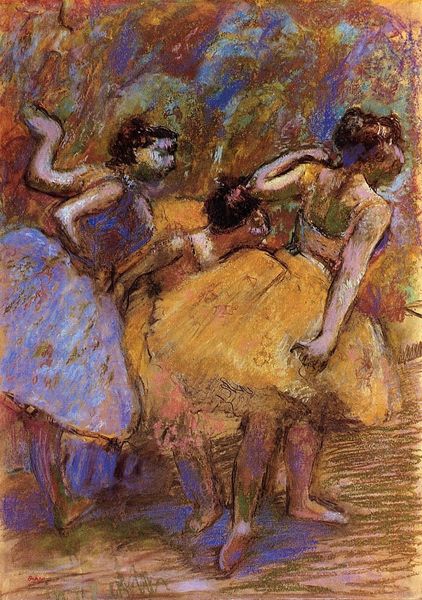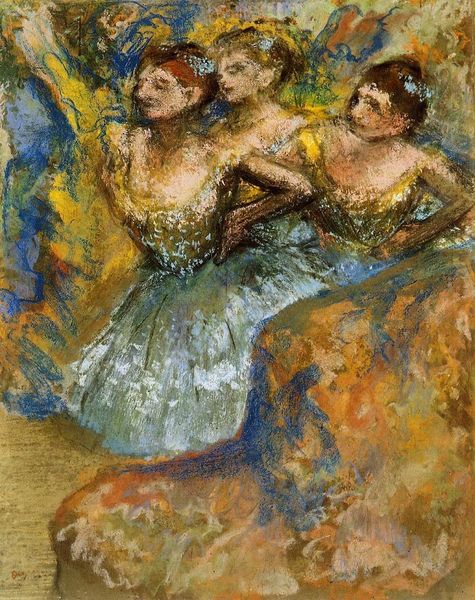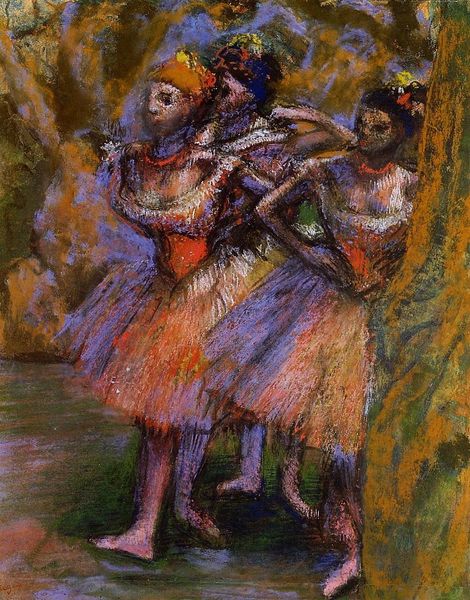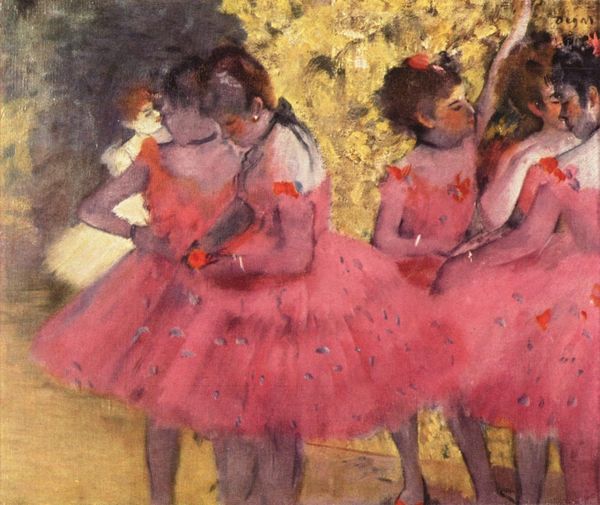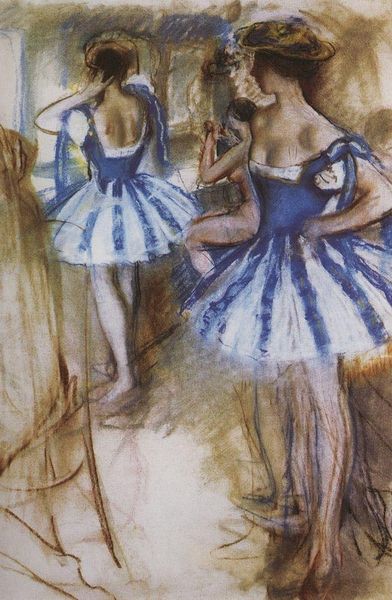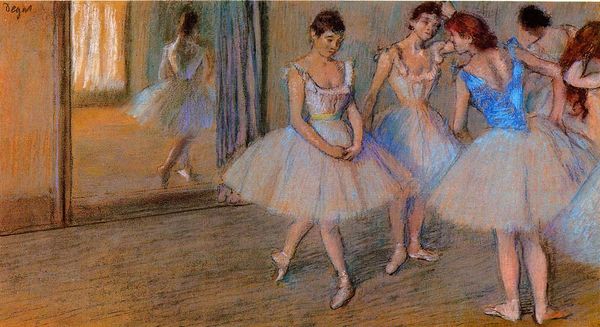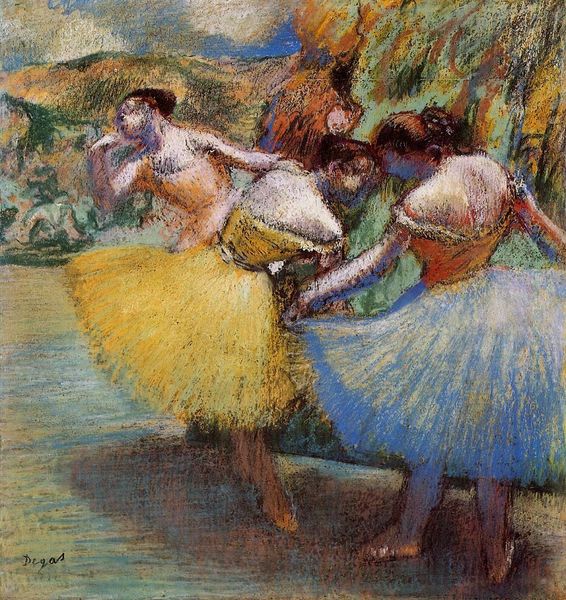
drawing, pastel
#
portrait
#
drawing
#
impressionism
#
impressionist painting style
#
figuration
#
possibly oil pastel
#
oil painting
#
france
#
painterly
#
painting painterly
#
pastel
#
lady
Copyright: Public domain
Curator: Here we have Edgar Degas’ “Three Dancers before Exercise,” created around 1880. It’s a pastel drawing, currently held in a private collection. The hazy, soft focus of the image immediately makes me think of a dream, or perhaps a memory fading with time. What’s your initial take? Editor: The sheer repetition of form speaks volumes about the factory-like conditions of ballet production at the time. These girls are workers, and the pastel feels almost like dust, or chalk from the studio floor. I imagine the back-breaking labor that went into each plié, each rehearsal. Curator: Interesting, because I see a certain reverence, even tenderness in the way Degas captures the women. The pastel medium lends itself to this ephemeral quality, as if capturing a fleeting moment of grace and composure. The dancers’ costumes have their own symbolism: they are bedecked like sacrificial priestesses. Editor: Sacrifice indeed. It’s vital to acknowledge that ballet in the late 19th century was intertwined with exploitation, and the power dynamics within the ballet world often reflected larger societal inequalities. How were the costumes constructed? By whom? How did this affect the dancer's labor, the limitations imposed on them through restricted mobility and hypersexualized attire? These are some of the underlying, complex social issues apparent within this medium. Curator: Yes, there's a tension here. It evokes the complex reality these young women faced, balancing their artistic dreams with the constraints of their working conditions. I am drawn to the subtle interplay of the women's gestures, conveying their solidarity, but perhaps also their shared fatigue. Look at their eyes and faces. What do you make of this visual representation of performance and backstage preparation? Editor: Degas, while documenting these backstage moments, participates in a system. I'm interested in exploring how he positions himself, both artistically and socially, in relation to these dancers. The male gaze here certainly complicates any sense of female agency within the work. Degas might romanticize their world, but the reality of the labor, the economic necessities, and the pressures of their situation cannot be overlooked. Curator: A lot to ponder, indeed! I leave feeling that there are numerous elements worthy of reflection here in the interplay of aesthetics and underlying meanings, a rich interplay to interpret, which can transform or expand the way you or I understand Degas’ overall legacy. Editor: Absolutely. Examining the economic, social, and material factors involved enhances our understanding of both the artist’s creation and the subject's place within a specific historical framework.
Comments
No comments
Be the first to comment and join the conversation on the ultimate creative platform.
